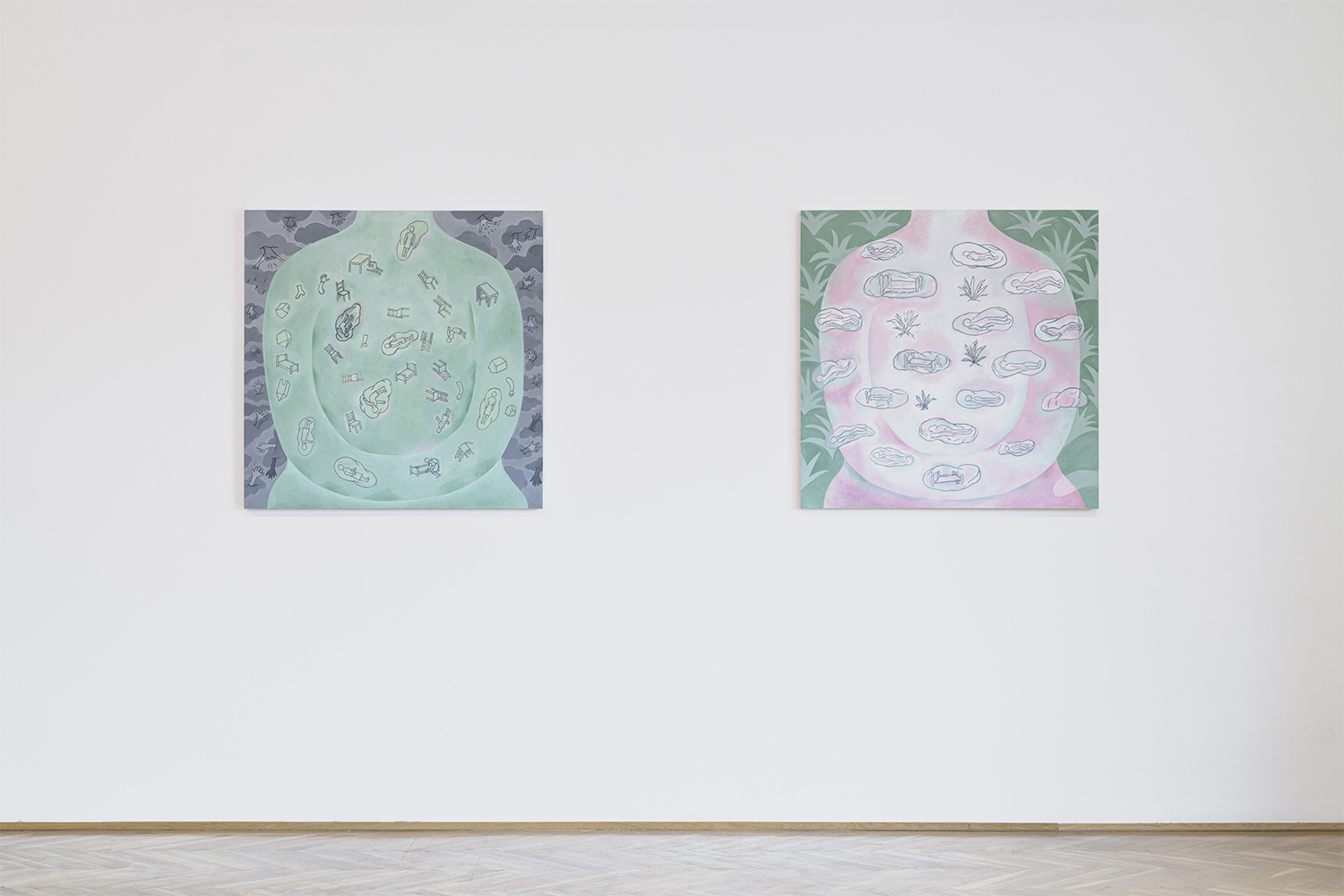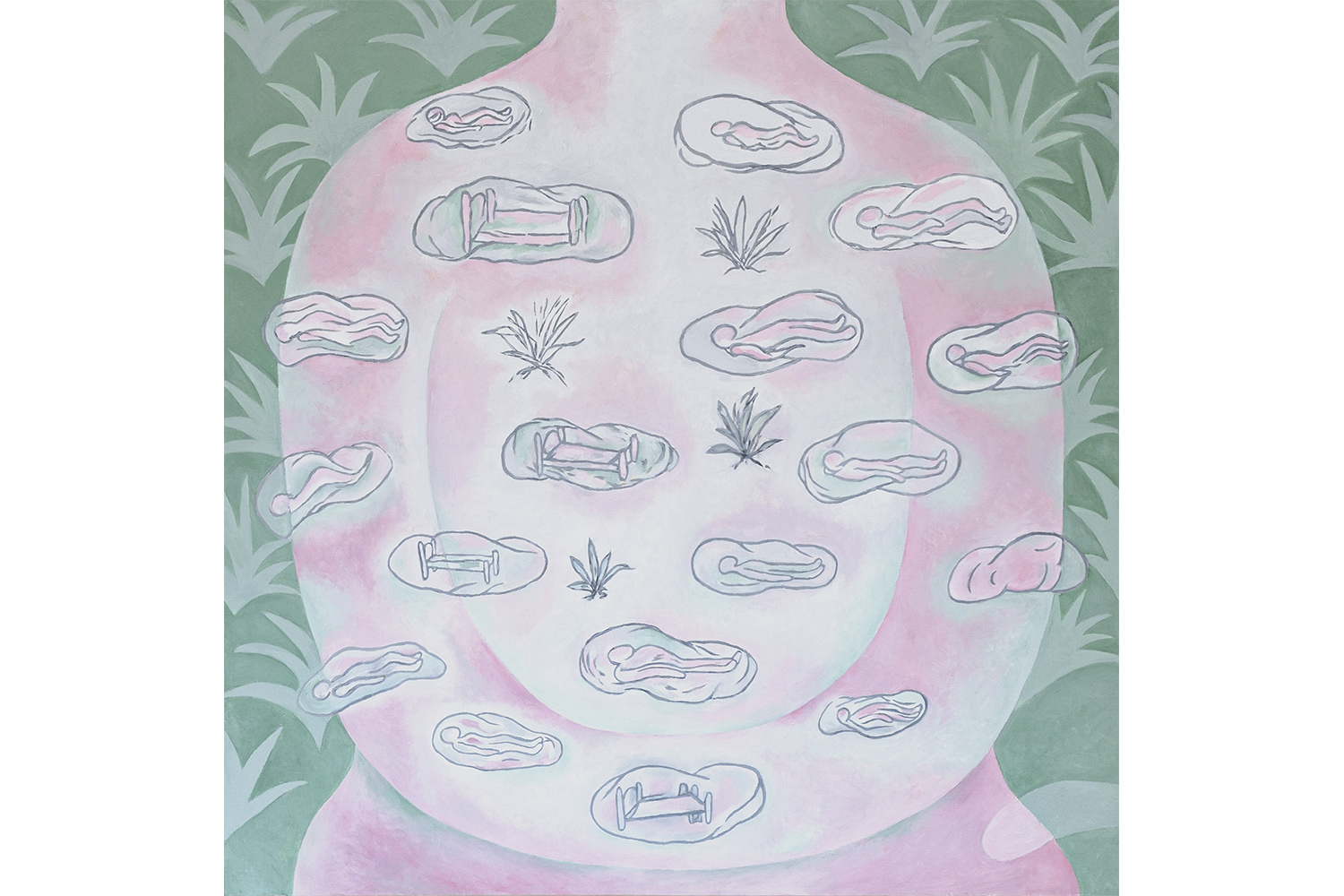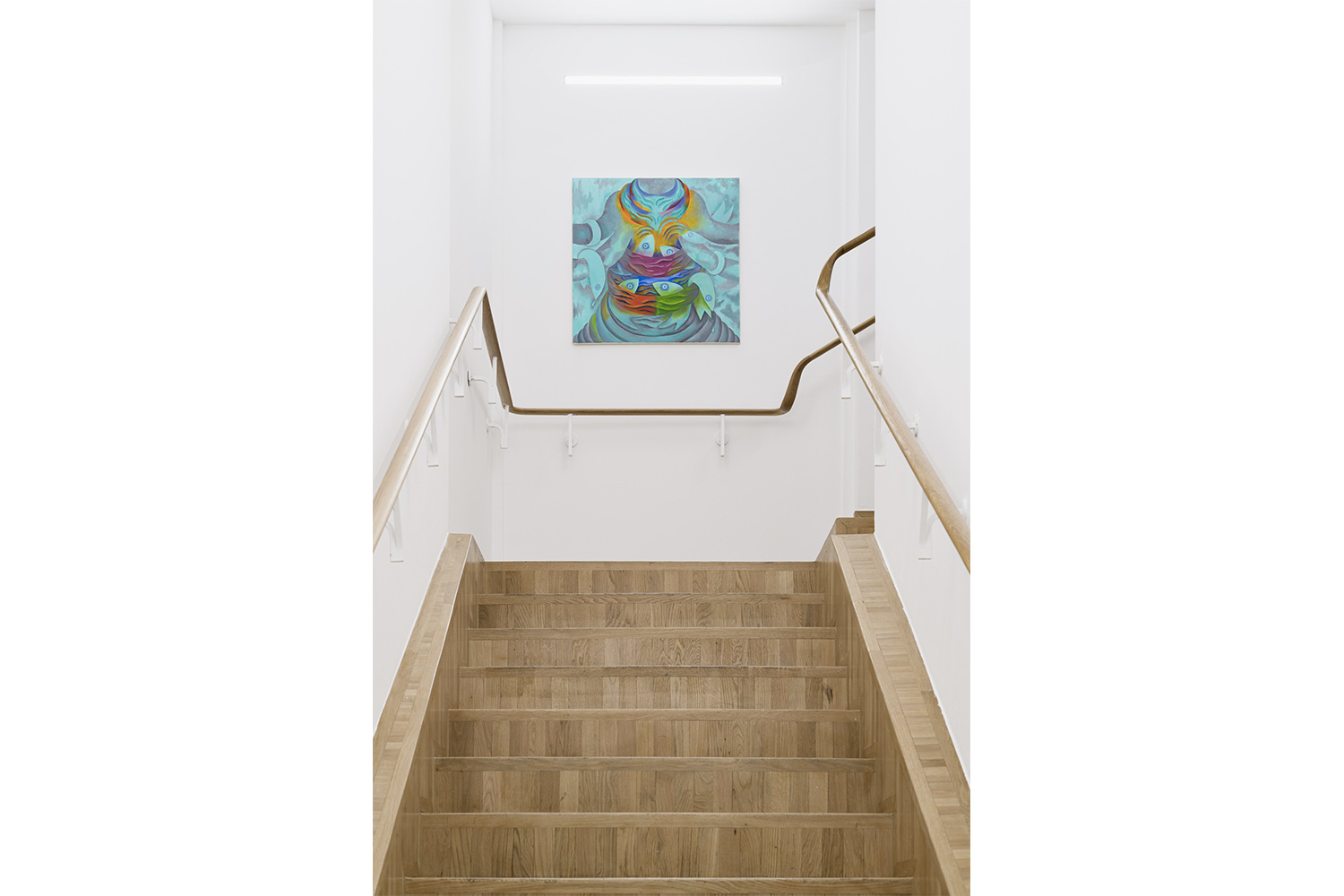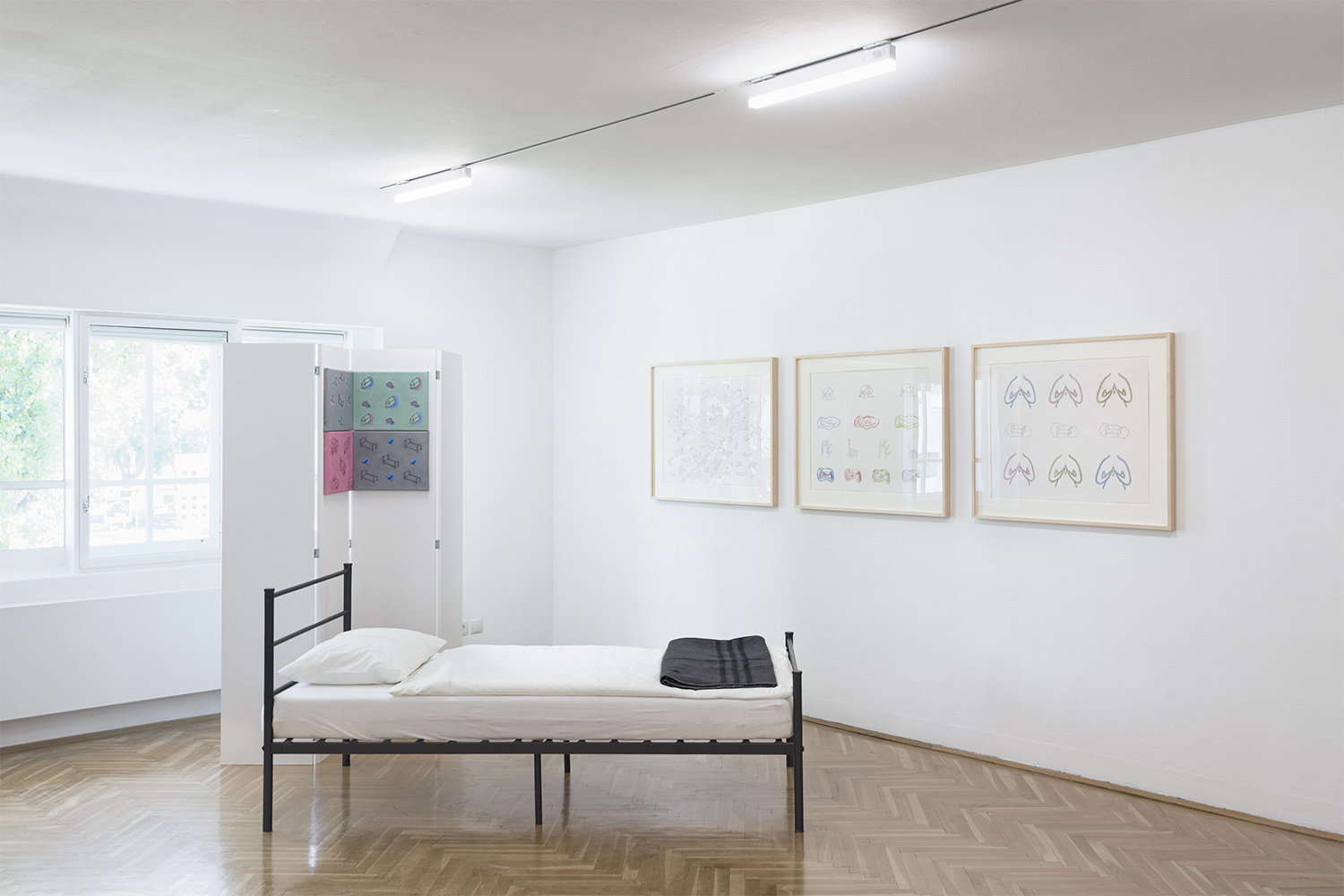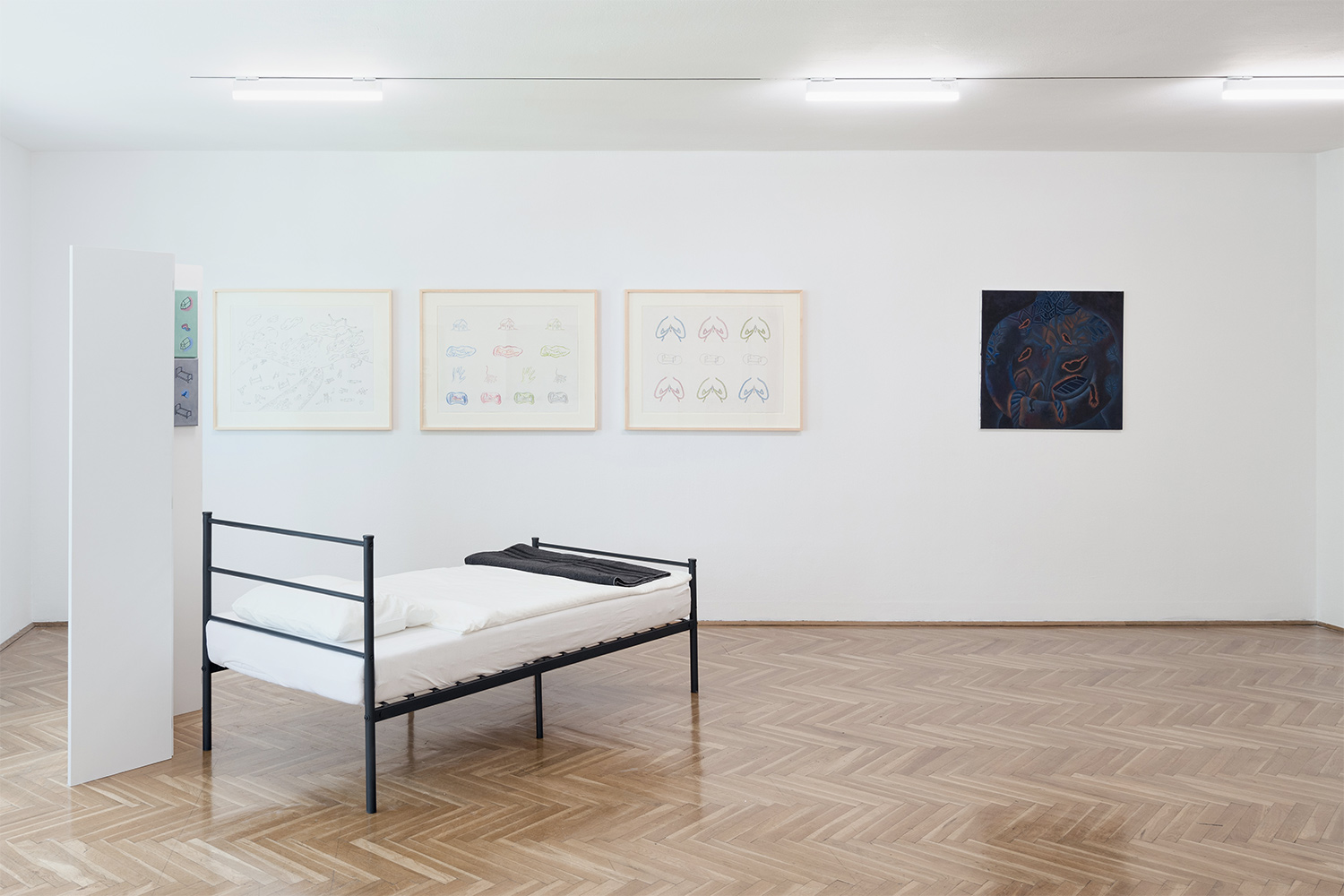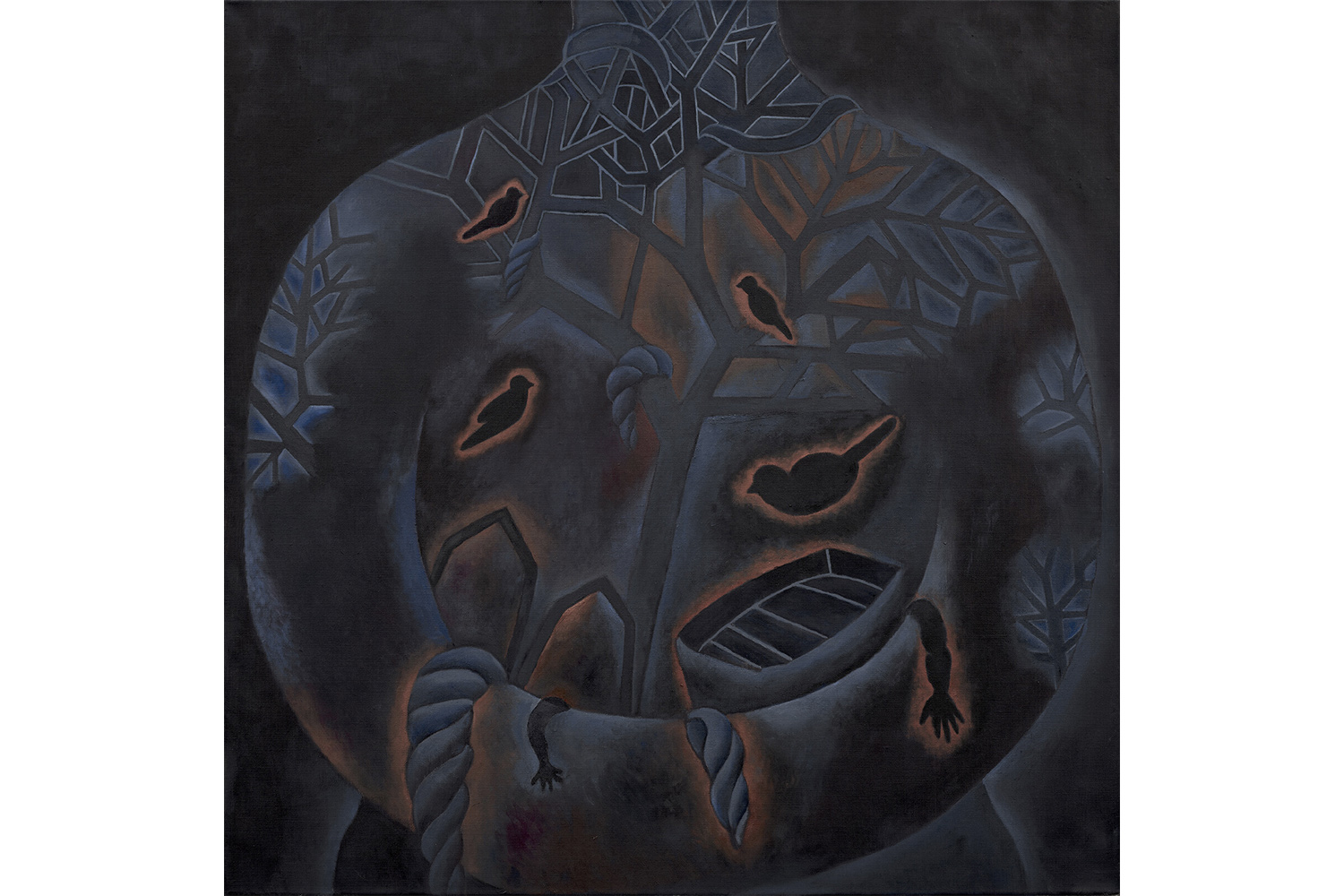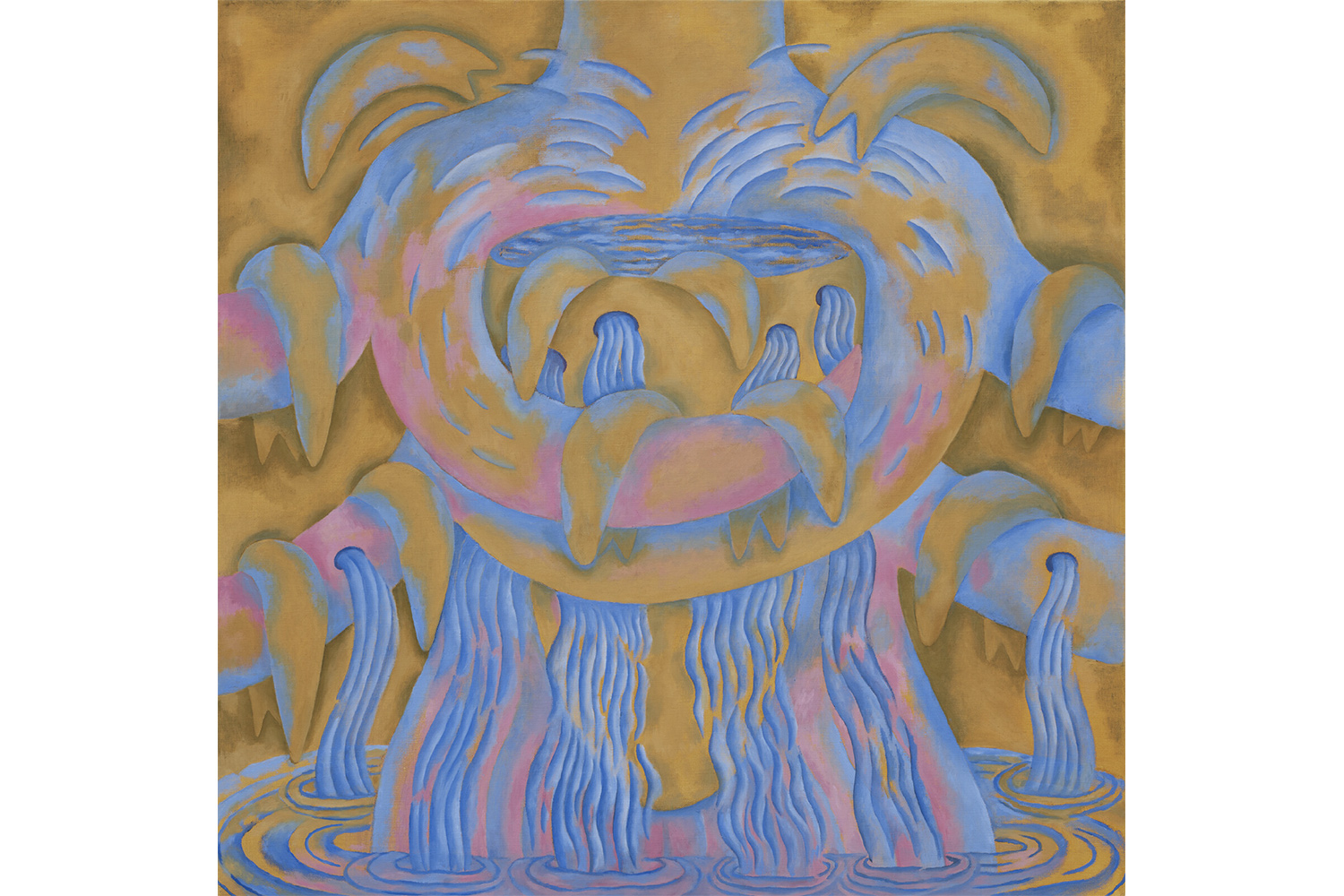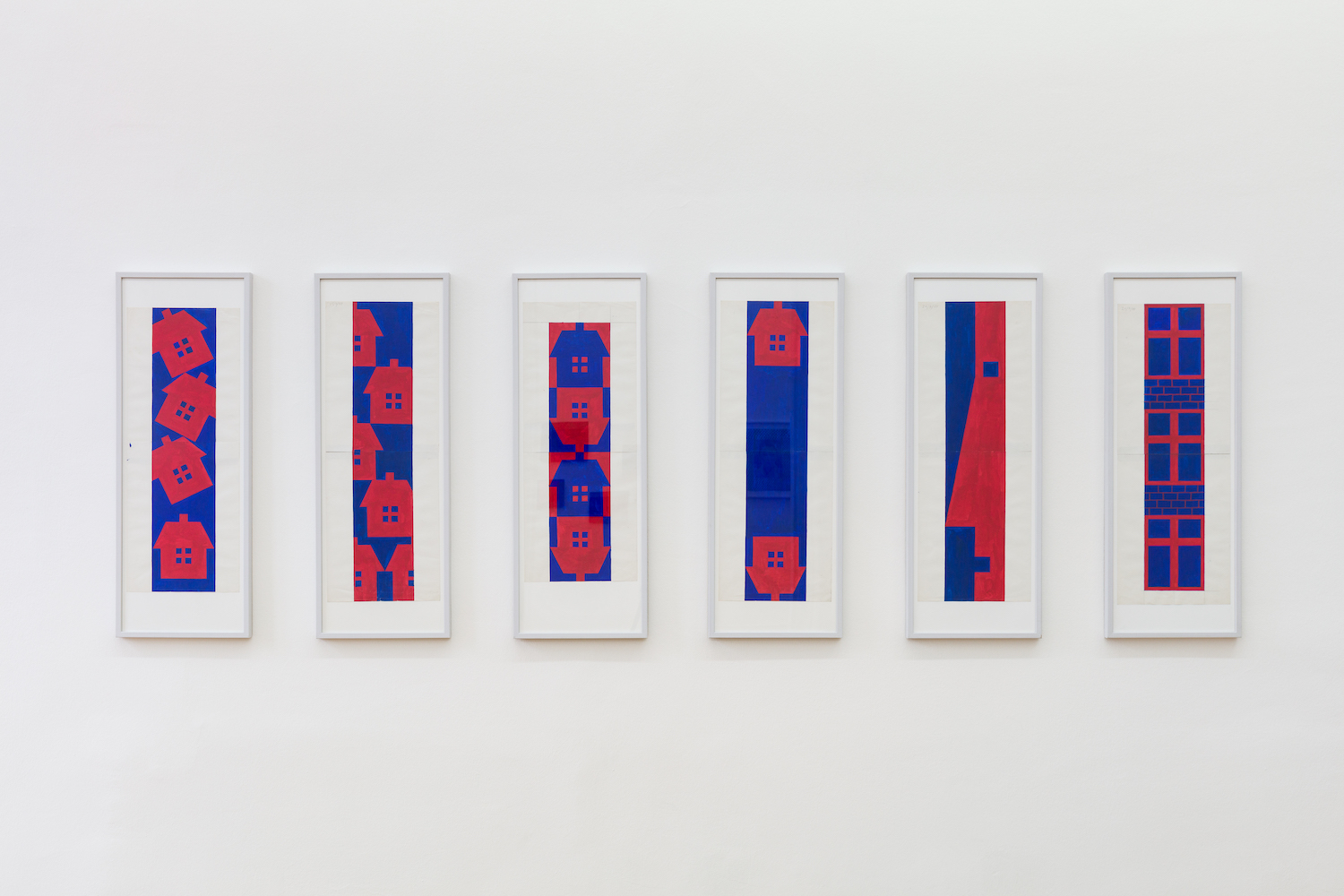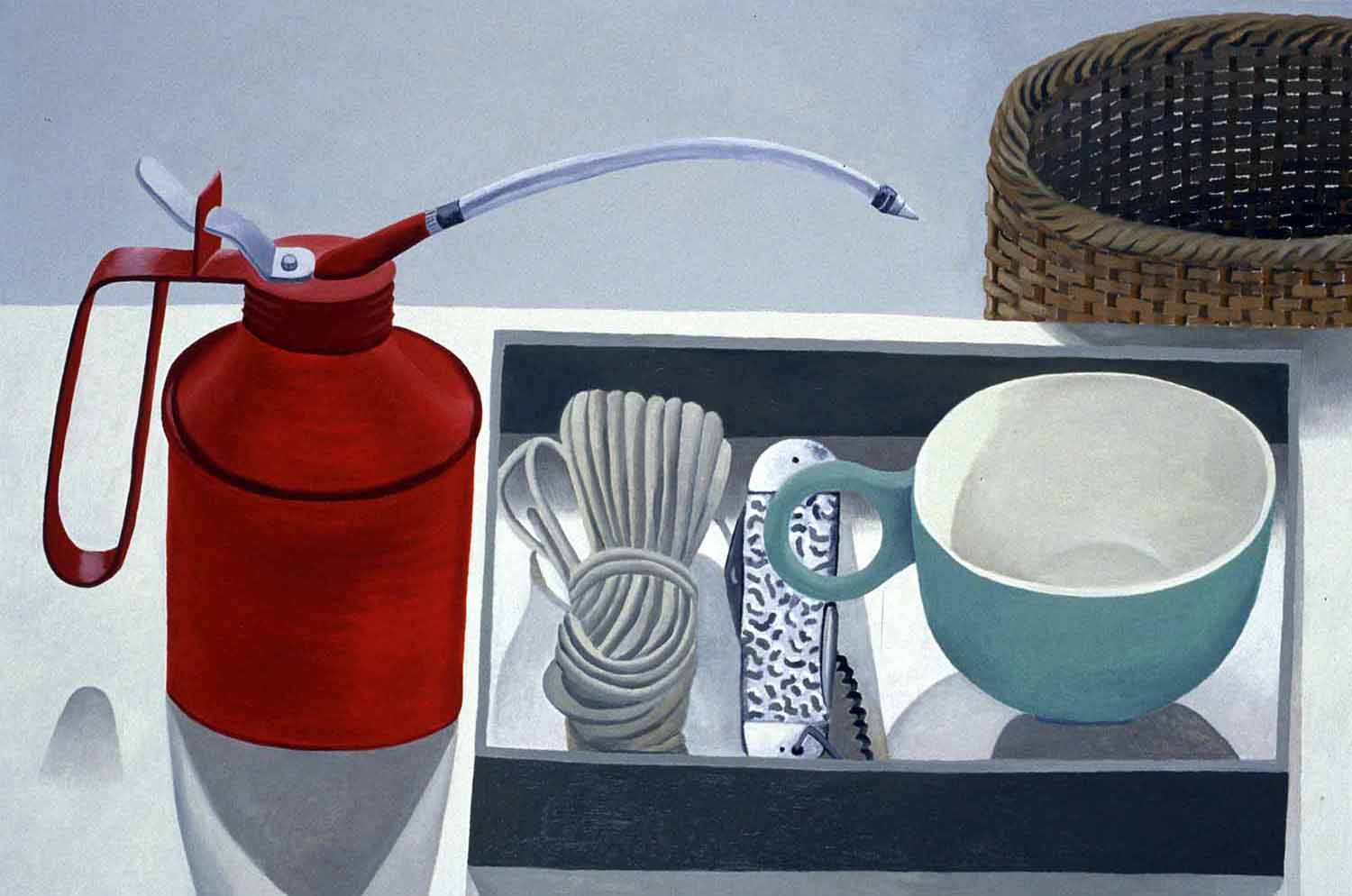That Suellen Rocca conceived of this exhibition at Secession before dying unexpectedly in March of this year adds to its surreal if not mythical nature. The show, which runs through November 8, is relatively small, tucked away in the Grafisches Kabinett, but the installation is powerful and ethereal. In a bright and airy room above the main halls of the late-nineteenth-century building designed by Joseph Maria Olbrich, new paintings and drawings are shown alongside works from recent decades: some are on the walls, others are on a freestanding folding screen behind a single bed, made up and ready for rest. The bed not only echoes the imagery in the work but invites a reconsideration of what the works are: comic, figurative glimpses of a Freudian psychedelic trip into the oneiric unconscious.
Suellen Rocca was born in Chicago in 1943. In the 1960s she was a member of the Hairy Who, a group of artists from the Chicago Art Institute who were part of the Chicago Imagist movement. Even many years later, it is evident that Rocca’s wild and honest work rebelled against Pop and Minimalist trends in New York. While her work from that early period (chaotic, explosive) is certainly different from the work in this show (clean, soothing), there is still a sense of immediacy and emotion that is far from the cool detachment or shiny patina of so many past and present art movements. In fact, her work consistently reverberates a notable Art Brut influence.
At first viewing, Rocca’s work brings on a discomforting nostalgia for an early twentieth-century version of feminism — think Charlotte Perkins Gilman’s “The Yellow Wallpaper” and its obsessive distortions of domestic space. Upon further consideration, the work suggests a sci-fi quality not unlike Margaret Atwood’s The Handmaid’s Tale, the too-close-to-home dystopia in which the female body is a site for production of any and every kind. Rocca’s bodies rest and repose in pods, her pastel hieroglyphs of domestic objects — chairs and beds, birds and hands, bodies encased in clouds — float on the canvas. Rib cages fill with leaves and volcanoes and fish and tree trunks gush with flowing ooze.
In what direction was Suellen Rocca’s bed placed when she dreamed up these phantasmagoric images? Likely due north, making for cosmic clarity. Rocca’s work seems tenderly abject, at peace with its insider-outsider status. It’s as if tiny aliens occupy the vibrant dollhouse imagery and take over — setting up an unlikely combination of worlds that has something to teach us in order for us to change. Rocca is giving us a new lexicon with these images, a way of reevaluating the everyday to see its magical worth.


